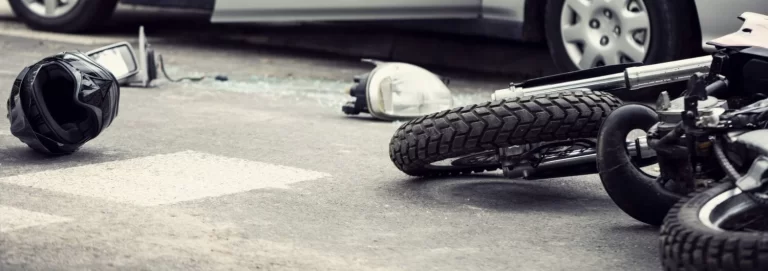Motorcycle crashes without helmets can be catastrophic. Riders who crash without a helmet have increased chances of traumatic brain injury and the mortality rate is significantly higher. Protective gear is essential for risk reduction and keeping riders safe from severe injuries in the event of an accident.
The long-term consequences of a motorcycle collision can leave riders and their families suffering physically, emotionally, and financially. For those who were injured or lost a loved one in a motorcycle crash, a New York motorcycle accident lawyer can provide essential guidance on their compensation claim.
Can Wearing A Helmet Cause Brain Injury?
Yes, even helmeted riders can suffer brain damage. Helmet effectiveness hinges on the quality of the helmet and improper fit. Under New York’s helmet law, all riders and their passengers are required to wear a DOT-approved helmet.
Unfortunately, the sale of counterfeit helmets is on the rise, putting motorcyclists at risk of severe injury. Riders should look for a DOT sticker on the back of the helmet and recognize the signs of an unsafe helmet.
Which Head Injuries can Occur When not Wearing Helmets?
Non-helmeted riders are 3 times more likely to suffer traumatic brain injuries than their helmeted counterparts (NHTSA, 2008). Studies have also found that wearing a helmet reduces the risk of death by 37-42%. A significant percentage of motorcycle accidents are fatal accounting for 15% of all motor vehicle deaths in 2022.
Any number of injuries can occur from a motorcycle accident. Failing to use a helmet can increase injury severity, including the following:
- Skull Fracture
- Concussion
- Brain Damage
- Epidural Hematoma
- Hemorrhage
- Diffuse Axonal Injury
- Coup-Contrecoup Brain Injury
Additionally, lack of proper head protection may cause facial injuries like contusions, road rash, burns, and lacerations.
How are Helmets Designed to Reduce Damage to the Brain?
DOT-approved helmets have three main components: hard outer shell, impact-absorbing liner, and padding. While the padding increases comfort for the rider the other components are critical for injury prevention. So how does it work?
Helmet design utilizes physics theories to reduce the impact of a crash on the rider. This includes:
- Force Distribution: The hard outer shell spreads the impact across a larger area, reducing impact on a single point.
- Energy Absorption: The impact-absorbing liner compresses on impact, preventing the impact from reaching the brain directly.
- Reduced Deceleration: The helmet’s absorption of the impact energy extends the time it takes for the head to slow down during a crash, reducing the risk of injury.
Moreover, helmets provide eye protection, hearing protection, and other face protection.
How to Prevent Brain Injuries Without Wearing Helmets
Since 1967, riders have been required to wear a helmet in New York. Compliance with the law does not just reduce the chance of being fined, but also increases safety. However, young riders and others may participate in risky behavior, ignoring these and other traffic laws.
Preventing the chance of a collision is the most important way to prevent brain injuries, with or without a helmet. Riding while intoxicated, reckless riding, speeding, and distracted riding are just some behaviors that can lead to a serious crash. Even the most cautious riders may find themselves in an accident, so appropriate helmet use is one of the best ways to prevent a head injury and increase chances of survival.
How Insurance Companies Assess Helmet use in Injury Claims
Helmet usage is not only critical for reducing the chances of serious injury, but may also play a significant role in determining compensation after a claim. This is true not only because of New York’s universal helmet law, but because of the comparative negligence rule.
Under New York’s pure comparative negligence rule, you can still be compensated even if you are partially at fault for the accident and your injuries. However, your compensation will be reduced by that percentage of fault. For instance, if your claim is worth $100,000 but the insurance company finds that failing to wear a helmet was 30% the cause of injury, you may only be able to recover $70,000.
Seek An Injury Attorney Who Can Help
Whether or not a rider wears a helmet, a collision can cause traumatic and catastrophic injury. Moreover, whether protective gear was utilized or not, riders and their families deserve fair compensation. If you or someone you loved has been hurt, a personal injury lawyer can help.
At Gregory Spektor & Associates, P.C., we understand the challenges associated with motorcycle accident claims. Our attorneys recognize the harmful stereotypes regarding motorcyclists and how they can undermine your insurance claim. If you need empathetic and dedicated legal support, contact us now for a free consultation.



